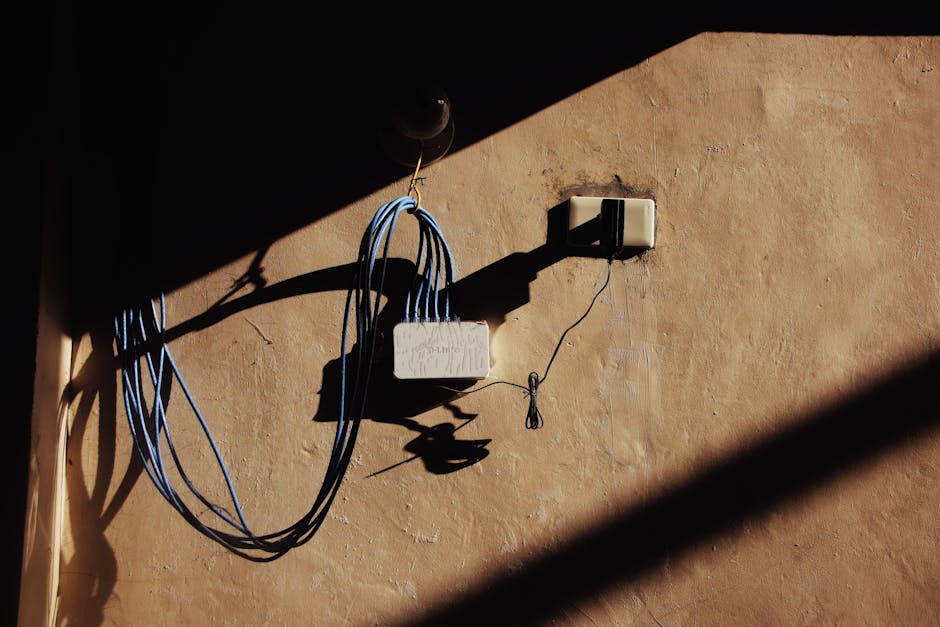Evolution of network cabling
Cables have come a long way from the simple cords we used to connect our devices. Today, network cabling has evolved to meet the ever-increasing demands of our connected world. Fiber optic cables are becoming more popular due to their superior speed and reliability. Structured cabling systems are being adopted by many organizations for their efficiency and organization. The Internet of Things (IoT) is driving the need for more advanced cabling solutions to support the growing number of connected devices. As technology continues to advance, network cabling will play a crucial role in ensuring fast and reliable connectivity for years to come.
Importance of professional installation
Professional installation ensures your network cabling is set up correctly, minimizing the risk of issues in the future. Here are a few reasons why opting for professional installation is key:
- Expertise: Professionals have the knowledge and experience to handle the intricacies of network cabling installations.
- Efficiency: They can complete the installation process swiftly, minimizing downtime for your network.
- Reliability: With professionals, you can trust that the cabling is set up securely and will function effectively for your needs.
Innovative network cabling technologies
Innovative network cabling technologies are shaping the future of data connectivity. These advancements aim to enhance speed, efficiency, and reliability in network installations all around. Here are some key innovations to look out for in the cabling industry:
- Fiber Optic Solutions: Fiber optic cables are becoming increasingly popular for their ability to transmit data at high speeds over long distances.
- Power over Ethernet (PoE): PoE technology enables the transfer of power and data over a single cable, simplifying installation and reducing costs.
- Structured Cabling Systems: These systems provide a unified infrastructure for voice, data, and video services, streamlining network management.
- Wireless Connectivity Integration: The integration of wireless technologies with cabled networks is expanding connectivity options and flexibility.
Stay tuned to learn more about these cutting-edge technologies and how they are revolutionizing network cabling installations.
Trends in network cable installation
Network cabling is moving towards faster speeds and greater efficiency with the latest trends in installation. Here are some key trends to watch out for:
- Fiber Optic Cabling: Increasingly becoming popular due to its ability to transmit data over longer distances at faster speeds.
- Power over Ethernet (PoE): This technology allows both power and data to be transmitted over a single Ethernet cable, simplifying installations and reducing costs.
- Structured Cabling Systems: Organizations are opting for structured cabling systems for their flexibility and future-proofing capabilities.
- High-Density Cabling: With the demand for more bandwidth, high-density cabling solutions are being adopted to optimize space utilization and enhance network performance.
Stay updated with these trends to ensure your network installations are efficient and in line with the latest industry advancements.
Benefits of professional network cabling
Professional network cabling ensures a reliable, fast, and secure connection for your devices. Here are some benefits:
- Reliability: Properly installed cabling reduces the risks of connection disruptions and downtime.
- Speed: Professional installation supports high data transfer speeds, crucial for modern networks.
- Security: Secure cabling configurations prevent unauthorized access to your network.
- Future-Proofing: Up-to-date cabling infrastructure can accommodate evolving technology demands efficiently.
- Organization: Well-laid cabling enhances cable management and troubleshooting processes.
Impact of network cabling on business operations
Network cabling is crucial for businesses as it forms the backbone of their communication infrastructure. Efficient network cabling ensures smooth and reliable data transfer, leading to improved productivity and seamless operations. It allows for faster data transmission, enhances connectivity among devices, and supports the integration of advanced technologies like IoT and cloud computing. Poor network cabling can result in slow data speeds, frequent downtime, and compromised security, all of which can significantly hamper business operations. A well-designed and properly installed network cabling system is essential for businesses looking to stay competitive and adapt to the evolving technological landscape.
Future prospects in network cabling
Future prospects in network cabling look promising as technology continues to advance. With the rise of smart homes, 5G connectivity, and the Internet of Things, demand for efficient network infrastructure is on the rise. Professionals in network cabling can expect opportunities for growth and innovation, especially in the installation of high-speed fiber optics and wireless networks. Automation and remote monitoring are key trends that are shaping the future of network cabling, making installations faster and more reliable. Stay tuned for more updates on the latest developments in the industry!
Professional installation process
Professional installers are trained to efficiently set up your network cabling system. They will start by inspecting your space to plan the optimal layout for the cabling. The team will then carefully install and secure the cables to ensure a stable connection. Testing the network thoroughly is crucial to guarantee everything is working correctly. If any issues arise, the installers will troubleshoot and make necessary adjustments for peak performance.
Incorporating sustainability in network cabling
Sustainability in network cabling is becoming more important as companies aim to reduce their environmental impact. Using eco-friendly materials and energy-efficient designs can lead to significant cost savings in the long run and help protect the environment. Recycling old cables and choosing low-energy consumption equipment are important steps in incorporating sustainability in network cabling. Opting for energy-efficient cables and equipment can help reduce power consumption and lower utility costs. By embracing sustainable practices, businesses can contribute to a greener future while also benefiting their bottom line.
Conclusion and key takeaways
Professional network cabling is essential for businesses to ensure reliable and efficient communication. As technology advances, the demand for faster and more secure networks continues to grow. To stay ahead in the industry, businesses should consider implementing the following key takeaways:
- Embrace emerging technologies such as fiber optics for faster data transmission.
- Invest in high-quality cabling materials to ensure longevity and performance.
- Work with certified professionals for proper installation and maintenance.
- Stay informed about industry trends and innovations to adapt to changing needs efficiently.
By incorporating these practices, businesses can future-proof their network infrastructure and stay competitive in today’s rapidly evolving technological landscape.


